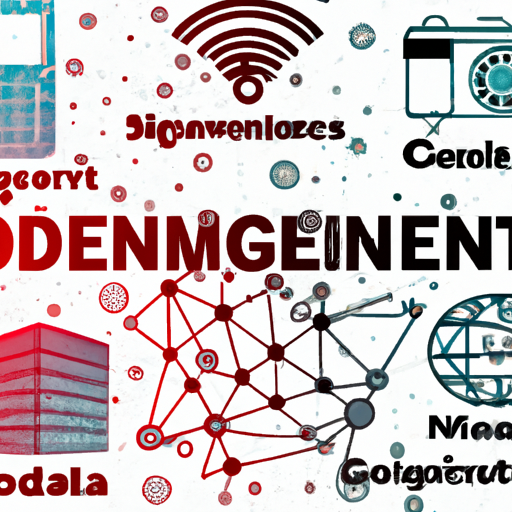-
Table of Contents
- Introduction
- The Impact of Autonomous Vehicles on Urban Mobility and Sustainability
- Exploring the Benefits of Smart City Technologies for Urban Development
- The Role of Citizen Engagement in Shaping the Future of Cities
- The Challenges of Urban Sprawl and Strategies for Sustainable Urban Growth
- Conclusion
“Creating a Smarter, Greener Future for Our Cities”.
Introduction
The future of cities and urban development is an exciting and rapidly evolving field. With the rise of smart cities and urban sustainability, cities are becoming more connected, efficient, and sustainable. Smart cities are leveraging technology to improve the quality of life for citizens, while urban sustainability initiatives are helping to reduce the environmental impact of cities. As cities become more connected and efficient, they are also becoming more livable and resilient. This is leading to a new era of urban development that is focused on creating cities that are both sustainable and livable. This article will explore the future of cities and urban development, including smart cities and urban sustainability.
The Impact of Autonomous Vehicles on Urban Mobility and Sustainability
Autonomous vehicles (AVs) are rapidly becoming a reality, and their potential to revolutionize urban mobility and sustainability is immense. AVs are expected to reduce traffic congestion, improve safety, and reduce emissions. This article will discuss the potential impacts of AVs on urban mobility and sustainability.
First, AVs have the potential to reduce traffic congestion. By using advanced sensors and algorithms, AVs can communicate with each other and coordinate their movements to reduce traffic jams. This could lead to smoother traffic flow and shorter travel times. Additionally, AVs can be programmed to drive more efficiently, which could reduce fuel consumption and emissions.
Second, AVs could improve safety. By eliminating human error, AVs could reduce the number of traffic accidents. This could lead to fewer injuries and fatalities, as well as fewer traffic delays. Additionally, AVs could be programmed to obey traffic laws, which could reduce the number of traffic violations.
Third, AVs could reduce emissions. By driving more efficiently and reducing traffic congestion, AVs could reduce the amount of fuel consumed and the amount of emissions released into the atmosphere. This could lead to cleaner air and a healthier environment.
Finally, AVs could improve access to transportation. By providing more efficient and affordable transportation options, AVs could make it easier for people to access jobs, education, and other services. This could lead to increased economic opportunities and improved quality of life.
In conclusion, AVs have the potential to revolutionize urban mobility and sustainability. By reducing traffic congestion, improving safety, and reducing emissions, AVs could lead to a more efficient and sustainable transportation system. Additionally, AVs could improve access to transportation and lead to increased economic opportunities. As AVs become more prevalent, it is important to consider their potential impacts on urban mobility and sustainability.
Exploring the Benefits of Smart City Technologies for Urban Development
Smart city technologies are revolutionizing the way cities are managed and developed. By leveraging the power of the Internet of Things (IoT), artificial intelligence (AI), and other cutting-edge technologies, cities are able to become more efficient, sustainable, and livable. Smart city technologies offer a range of benefits for urban development, from improved public safety to better resource management.
One of the most significant benefits of smart city technologies is improved public safety. By leveraging the power of IoT and AI, cities can monitor and respond to public safety threats in real-time. For example, cities can use sensors to detect and respond to fires, floods, and other disasters. Additionally, cities can use facial recognition technology to identify and apprehend criminals.
Smart city technologies can also help cities become more efficient and sustainable. By leveraging the power of IoT and AI, cities can monitor and manage energy usage, water consumption, and waste management. This can help cities reduce their carbon footprint and save money on energy costs. Additionally, cities can use smart city technologies to optimize traffic flow and reduce congestion.
Finally, smart city technologies can help cities become more livable. By leveraging the power of IoT and AI, cities can monitor air quality, noise levels, and other environmental factors. This can help cities create healthier and more livable environments for their citizens. Additionally, cities can use smart city technologies to improve public transportation and provide better access to services and amenities.
In conclusion, smart city technologies offer a range of benefits for urban development. From improved public safety to better resource management, these technologies can help cities become more efficient, sustainable, and livable. As cities continue to embrace these technologies, they will be able to create better and more livable environments for their citizens.
The Role of Citizen Engagement in Shaping the Future of Cities
Cities are the engines of economic growth and development, and they are also the places where people live, work, and play. As such, it is essential that citizens have a say in how their cities are shaped and developed. Citizen engagement is a key factor in the future of cities, as it allows citizens to have a voice in the decision-making process and to shape the future of their cities.
Citizen engagement is a process that involves citizens in the decision-making process of their cities. This can take many forms, such as public meetings, surveys, and online forums. By engaging citizens in the decision-making process, cities can ensure that their decisions are informed by the needs and desires of their citizens. This can help to ensure that the decisions made are in the best interests of the citizens and the city as a whole.
Citizen engagement can also help to ensure that cities are more equitable and inclusive. By engaging citizens in the decision-making process, cities can ensure that all voices are heard and that all citizens have a say in how their cities are shaped. This can help to ensure that all citizens have access to the same opportunities and resources, regardless of their race, gender, or socioeconomic status.
Citizen engagement can also help to ensure that cities are more sustainable. By engaging citizens in the decision-making process, cities can ensure that their decisions are informed by the needs of the environment and the planet. This can help to ensure that cities are more energy efficient, use renewable energy sources, and reduce their carbon footprint.
Finally, citizen engagement can help to ensure that cities are more livable. By engaging citizens in the decision-making process, cities can ensure that their decisions are informed by the needs of their citizens. This can help to ensure that cities are safe, clean, and vibrant places to live.
In conclusion, citizen engagement is a key factor in the future of cities. By engaging citizens in the decision-making process, cities can ensure that their decisions are informed by the needs and desires of their citizens. This can help to ensure that cities are more equitable, inclusive, sustainable, and livable.
The Challenges of Urban Sprawl and Strategies for Sustainable Urban Growth
Urban sprawl is a major challenge facing cities around the world. It is defined as the rapid expansion of urban areas into rural and suburban areas, resulting in a decrease in the quality of life for both urban and rural populations. Urban sprawl has a number of negative impacts, including increased air and water pollution, increased traffic congestion, and a decrease in the availability of green space. It also has a significant economic impact, as it increases the cost of infrastructure and services, and reduces the efficiency of public transportation.
In order to address the challenges of urban sprawl, cities must develop strategies for sustainable urban growth. These strategies should focus on creating compact, walkable neighborhoods that are connected to public transportation and other amenities. This will reduce the need for cars and encourage people to use public transportation, which will reduce air pollution and traffic congestion. Additionally, cities should prioritize the development of green spaces, such as parks and gardens, which will provide recreational opportunities and improve air quality.
Cities should also focus on creating affordable housing options in order to reduce the need for people to move to the suburbs. This can be done by providing incentives for developers to build affordable housing, or by creating zoning regulations that require a certain percentage of housing to be affordable. Additionally, cities should focus on creating jobs in the city, as this will reduce the need for people to commute from the suburbs.
Finally, cities should focus on improving public transportation. This can be done by increasing the frequency and reliability of public transportation, as well as expanding the network of public transportation routes. Additionally, cities should focus on making public transportation more affordable and accessible, as this will encourage more people to use it.
By implementing these strategies, cities can reduce the negative impacts of urban sprawl and create more sustainable urban growth. This will improve the quality of life for both urban and rural populations, and create a more vibrant and livable city.
Conclusion
The future of cities and urban development is bright. Smart cities and urban sustainability are becoming increasingly important as cities become more crowded and resources become more scarce. Smart cities are using technology to improve the quality of life for citizens, while urban sustainability initiatives are helping to reduce the environmental impact of cities. As cities become more connected and technology advances, cities will become more efficient and livable. Smart cities and urban sustainability will be essential for cities to remain competitive and attractive to citizens. With the right investments and policies, cities can become more sustainable, livable, and prosperous.




